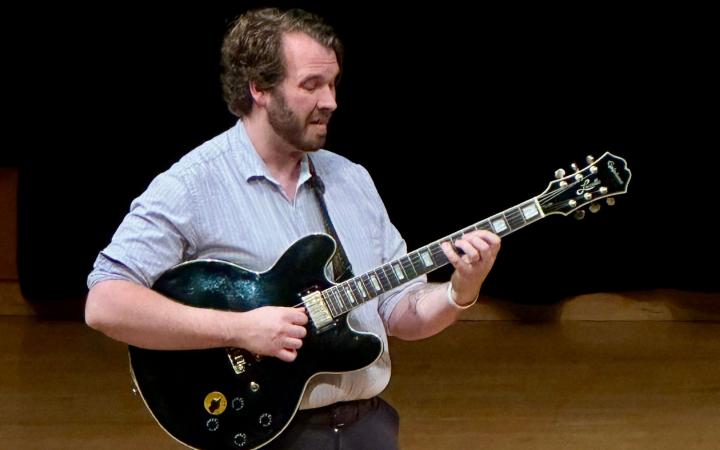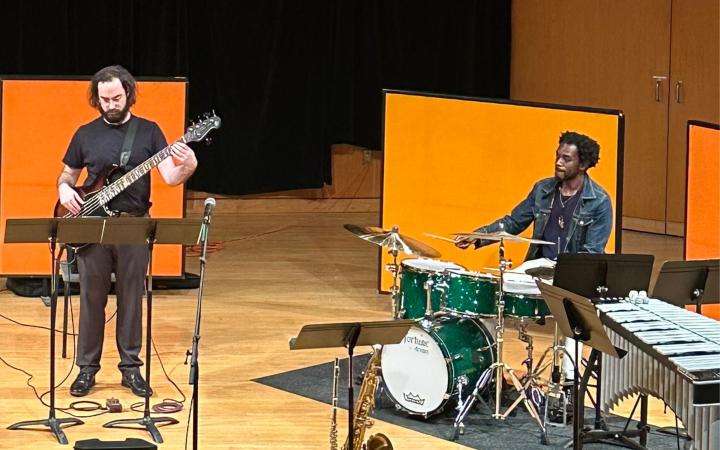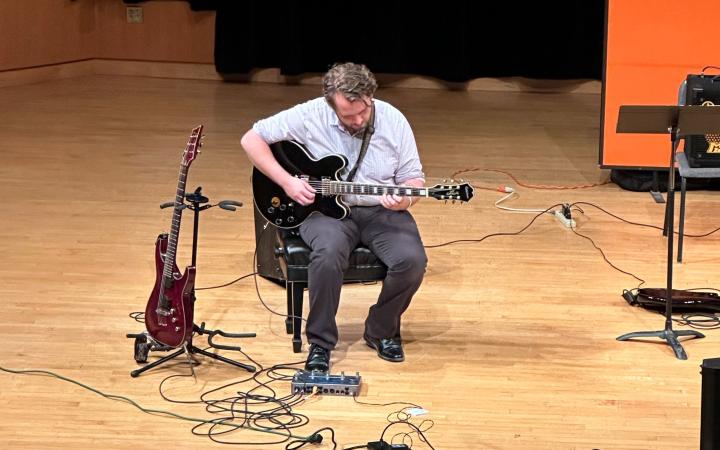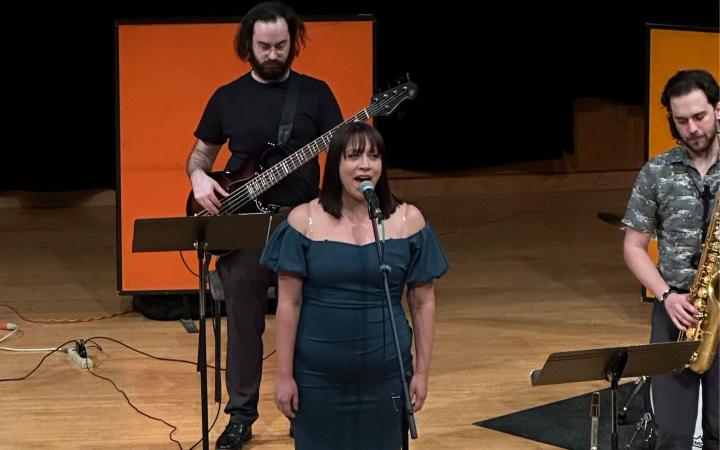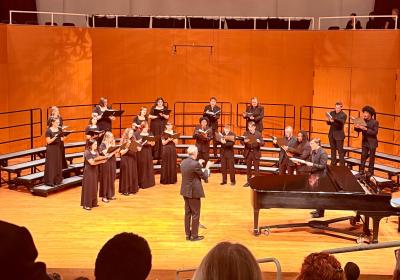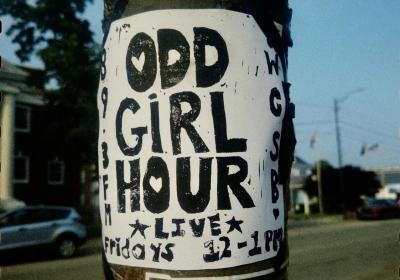
People of CSU: Steve Miller’s jazz finale
Cleveland State University graduate student Steve Miller wrapped up the month of March with a vibrant jazz guitar recital that blended original compositions, historic jazz pieces and personal expression.
The performance, held March 31 at Drinko Recital Hall, served as a capstone for Miller’s Master of Music in performance.
Backed by his ensemble and wife as a special guest vocalist, Miller performed a seven-piece set that showcased his technical skill, creativity and appreciation for jazz music.
“I’ve been working on these pieces all semester,” Miller said. “It feels good to finally share them with people in a live setting. It’s different from rehearsal, it breathes.”
The performance opened with “Lester Leaps In,” a riff-full swing tune by Lester Young. This piece, known for its distinctive riff and tempo, was a perfect fit for Miller’s lyrical improvisational style.
Miller said he chose the piece after listening to a 1956 Oscar Peterson recording and wanted to emulate the “lyrical” style of Young’s improvisations.
“Lester Young was a huge influence on me,” Miller said. “His ability to bend a note and make it sing, there’s such a vulnerability in his sound. It’s something I’ve always wanted to capture.”
Throughout the recital, Miller highlighted lesser known arrangements and provided introductions to each piece, offering context and history.
The next piece in the program was “Antigua,” a jazz ballad by Antonio Carlos Jobim. The rendition was tender and expressive, highlighting his sensitivity to dynamics.
“Bossa nova has such a relaxed yet complex rhythm,” Miller said. “I wanted to honor Jobim’s original vision but also bring a bit of my own voice into it, to make it feel more like my own.”
Miller’s choices created a sense of intimacy, drawing the audience in while honoring the roots of the piece.
He followed with a jazz waltz by Phill Woods called “Waltz for a Lovely Wife,” which introduced a more upbeat, swinging rhythm to the recital.
The song brought a fun energy to the performance and showcased Miller’s ability to navigate shifting time signatures.
This piece is so close to my heart,” said Miller. “It’s a tribute to love, and I wanted to ensure that the emotion behind it came through. It’s about expressing those delicate emotions in a musical way, and for me, that means focusing on phrasing and dynamics.”
His interaction with bassist Joey Fletcher and Drummer Alex Washington was especially close, which created a cohesive trio sound that elevated the piece's melodic and almost playful character.
Next, Miller performed “Freight Trane,” a composition by pianist Tommy Flanagan. The piece, originally recorded in 1959 by Kenny Burrell and John Coltrane, features a more complex harmony than the standard blues progression.
Miller chose this piece for its challenge in navigating quick chord changes at a higher tempo. His performance, along with the band’s execution, showcased their ability to handle harmonic shifts.
The recital then moved into “Londonderry Air,” a traditional Irish tune. This piece, often recognized as “Danny Boy,” stood out as a guitar solo performance shaped by classical and jazz influences.
“I improvise throughout my solo arrangement of ‘Danny Boy’, so it changes based on how I’m feeling,” said Miller.
Miller referenced Bill Evans’ rubato interpretation and Chet Atkins’ 1973 recording as inspirations for the piece.
Next he performed “Let’s Move” by Pat Methany. This was one of the recitals' most complex pieces.
The composition features intricate rhythmic structures and unexpected harmonic turns, which highlighted Miller’s improvisational skills and ear training.
“‘Let’s Move’ was a real technical challenge for me and I’m excited we managed to get it together,” Miller said. “But there was no doubt about choosing a Pat Methany song.”
Credit: Grace Salter
Vocalist Anney Jeandrevin-Miller, joins her husband to perform a heartfelt “Can’t Help Lovin’ That Man.”
Miller closed his recital with a heartfelt feature, performing “Can’t Help Lovin’ That Man” with his wife and frequent collaborator, Anney Jeandrevin-Miller.
The song served as a tender finale to a program rooted in Jazz tradition, personal connection and musical exploration.
Miller’s performance not only fulfilled his requirements for his Master of Music in Performance, but also demonstrated a musical perspective shaped by research, reflection and an evident love of the craft.

